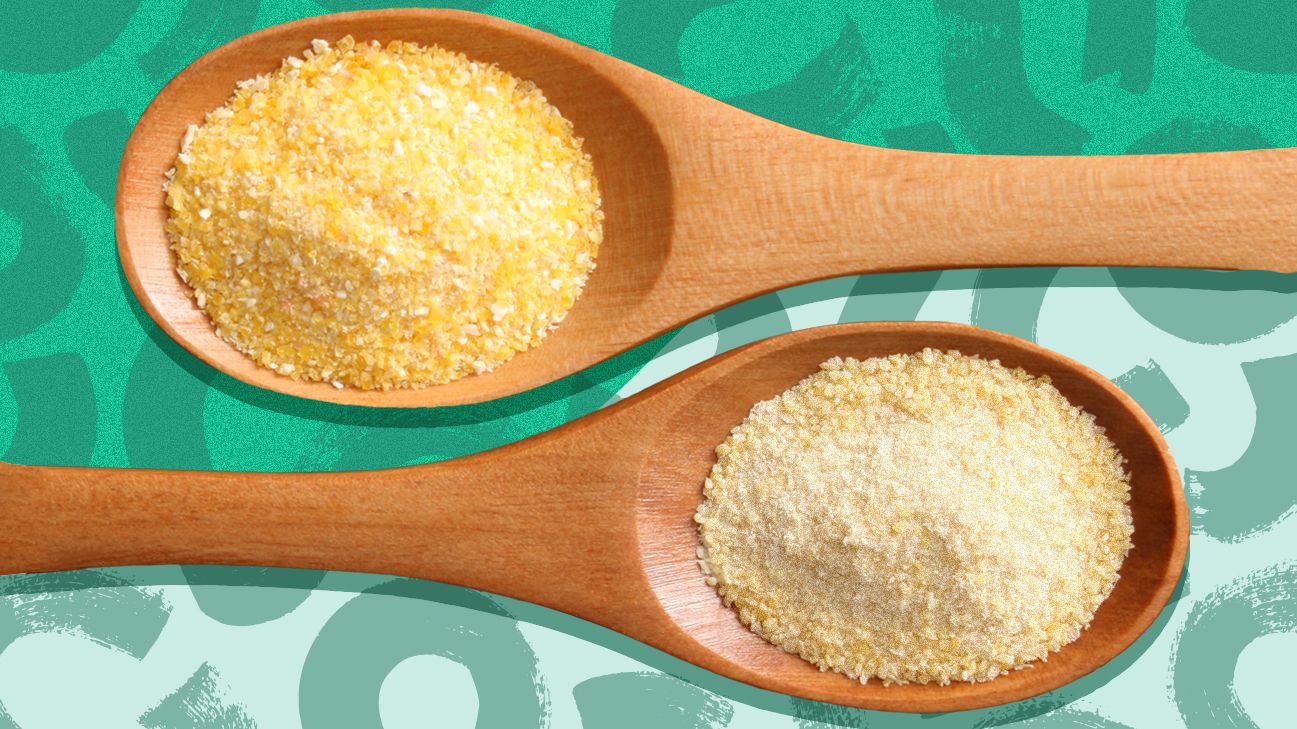They’re golden and used interchangeably. Yet polenta is a dish, and cornmeal is an ingredient — often the main ingredient in that dish. Hailing from northern Italy, polenta was originally a meal of any grain, coarsely ground and slow-cooked in liquid until mushy. Then it’s combined with other ingredients, from butter and cheese to sauces and gravies. When cooled, polenta hardens and can be cut into squares.
According to the grain gurus at Bob’s Red Mill, chestnut flour, buckwheat meal, chickpea flour, and coarse-ground rice are just a few of the many grains that were traditionally used for polenta in Italy. But cornmeal polenta is the most common preparation today, especially in the United States. Northern Italy’s polenta is equivalent to grits in the southern U.S. The cornmeal, usually yellow corn, must be a medium or course grind to make good polenta. Finely ground cornmeal (also called corn flour) will make a pasty polenta, and we don’t want that.
To further demonstrate the symbiotic relationship of all these components, Bob’s Red Mill has a product called “Corn Grits, also known as Polenta.” The package goes on: “Corn Grits cook quickly and make a rich and delicious porridge for breakfast, lunch or dinner. This freshly milled corn meal is also the indispensable ingredient for classic Italian polenta.”
Now cornmeal itself is made by grinding dried corn kernels — yellow, white, or blue kernels — into fine, medium, and course textures. We use cornmeal for cornbread, muffins, and other baked goods, to add thickness to chilis and stews, and for crunchy coatings on fish, meat, and poultry.
Traditionally, the kernels were ground by stone, which keeps some of the germs and hulls in there, making it more nutritious, yet more perishable, than modern methods. The modern way is steel-grinding, which takes out the germs and hulls, but has a longer shelf-life. Most cornmeal is a medium grind, unless the packaging states otherwise. To make matters more intricate, there’s also masa harina, which is cornmeal made from kernels that were first cooked in limewater.
So now that you’re fully versed in the many incarnations of cornmeal and polenta, you can make these dishes with more confidence.
1. Easy Polenta
This is the basic idea when it comes to polenta. Feel free to riff on it. To make this dish even better, substitute stock or broth for the water. Get our easy polenta recipe.
2. Italian-Style Beef Ragu with Cheesy Polenta
Polenta makes the base of an ultimate comfort food dish that’s quick enough for a weeknight meal with a side of greens. Get our Italian-style beef ragu with cheesy polenta recipe.
3. Vegetarian Butternut Squash and Swiss Chard Polenta Lasagna
This is probably not a weeknight meal if you work a day job and only have a few conscious hours at home afterward. But it’s a delicious, filling meal that serves a great many people (or a week’s leftovers), especially no-meat-eating people. Get our vegetarian polenta lasagna recipe.
This is a fabulous basic cornbread recipe that doesn’t require buttermilk, which you often buy for one recipe and then waste the rest, if you’re anything like some of us here. These ingredients are pantry staples. Oh, and the cornbread is actually moist and delicious. We like putting jalapenos in it. Get our moist cornbread recipe.
5. Cornmeal Fried Catfish with Remoulade
The crispy, spicy coating works really well with this fish. But really, you could use this method for other white fish or chicken. Get our cornmeal fried catfish recipe.
Just look at this dish. Don’t you want to gobble it up and lick the bowl? If cherries aren’t in season, you could try another fresh, in-season fruit. Get our cherry cobbler recipe.

